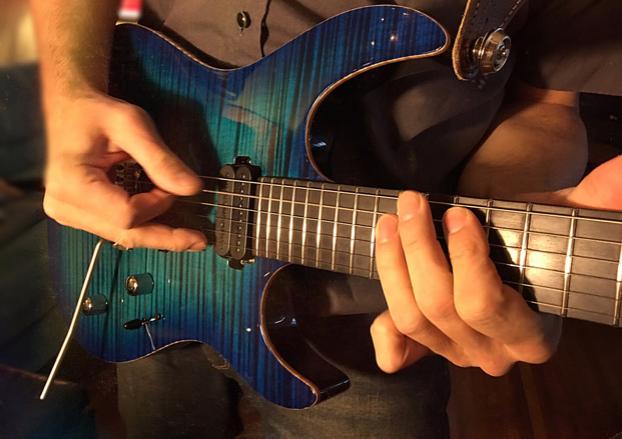How to Master Basic Bossa Rhythm for Guitar

Besides the swing rhythm, one of the most common rhythms I get asked about from readers and students studying jazz guitar is the Bossa Nova rhythm.
While it might sound alien to someone who wasn’t born in Brazil, or who hasn’t spent time in the country studying its music, learning the bossa rhythm on guitar can be broken down into three steps in order to quickly learn this fun rhythm on the fretboard.
In today’s lesson, we’ll be studying this three-step process as you begin to apply a bossa rhythm to a I VI ii V progression in C major, later taking it to other keys, other progressions and to full tunes as you study this rhythm further in the practice room.
Basic Bossa Rhythm Step 1: The first step in building a basic bossa rhythm on the guitar is to play a full chord on beat one of the bar, which includes the root note and all of the rest of the chord at the same time, as well as just the top notes of the chord, minus the root, on beat 2.
When playing these first two beats of the pattern, try and play them quietly and as even as possible, not having any accents of any kind at this point in the bar. The accent will come later on, and if you have the first half of the bar quiet and even, the accented & of 3 attack will stand out even more when you bring that to the pattern.

Now that you’ve worked out the first half of the bar, let’s take a look at the second half, which is simpler in its construction and more complex in its syncopation—at the same time.
Basic Bossa Rhythm Step 2: The first step in adding notes to the second half of the bar in a basic bossa rhythm is to place a root note on the third beat of the bar. For now, you can let that note right for a beat or the whole second half of the bar, but later on you will add a chord on top of that bass note and it will either ring over the chord, or be cut off.
For now, keep focusing on playing each of these three attacks, on beats 1, 2 and 3, quietly and evenly with no accents, which will come in with the final step of this process.

With the first three beats under your fingers, let’s add the last chord and finish this rhythmic pattern off with a syncopated attack on the & of beat 3.
Basic Bossa Rhythm Step 3: The final step features the first syncopated rhythm of the pattern, with a chord added on the & of 3 in the second half of the bar. As well, this is the first accented note of the pattern, which means that you play this chord a bit louder than the first 3 beats of the bar. After you have learned this pattern in the key of C major, try practicing it in all 12 keys, as well as applying it to other common chord progressions as you expand upon it further in the woodshed.

As you can see, when you hear this rhythm as a whole, it can sound tricky to get under your fingers. But, by breaking it down into three steps, you can quickly work out the basic Bossa rhythm for guitar in the woodshed before taking it out to Bossa and other Brazilian tunes on the bandstand.
Do you have any questions about this lesson? Share your thoughts in the COMMENTS section below.
Matt Warnock is the owner of mattwarnockguitar.com, a free website that provides hundreds of lessons and resources designed to help guitarists of all experience levels meet their practice and performance goals. Matt lives in the UK, where he is a lecturer in Popular Music Performance at the University of Chester and an examiner for the London College of Music (Registry of Guitar Tutors).
Get The Pick Newsletter
All the latest guitar news, interviews, lessons, reviews, deals and more, direct to your inbox!
Matt Warnock is the owner of mattwarnockguitar.com, a free website that provides hundreds of lessons and resources designed to help guitarists of all experience levels meet their practice and performance goals. Matt lives in the UK, where he teaches Skype guitar students all over the world, and is an examiner for the London College of Music (Registry of Guitar Tutors).
“There are so many sounds to be discovered when you get away from using a pick”: Jared James Nichols shows you how to add “snap, crackle and pop” to your playing with banjo rolls and string snaps
Don't let chord inversions bamboozle you. It's simply the case of shuffling the notes around







![Joe Bonamassa [left] wears a deep blue suit and polka-dotted shirt and plays his green refin Strat; the late Irish blues legend Rory Gallagher [right] screams and inflicts some punishment on his heavily worn number one Stratocaster.](https://cdn.mos.cms.futurecdn.net/cw28h7UBcTVfTLs7p7eiLe.jpg)


